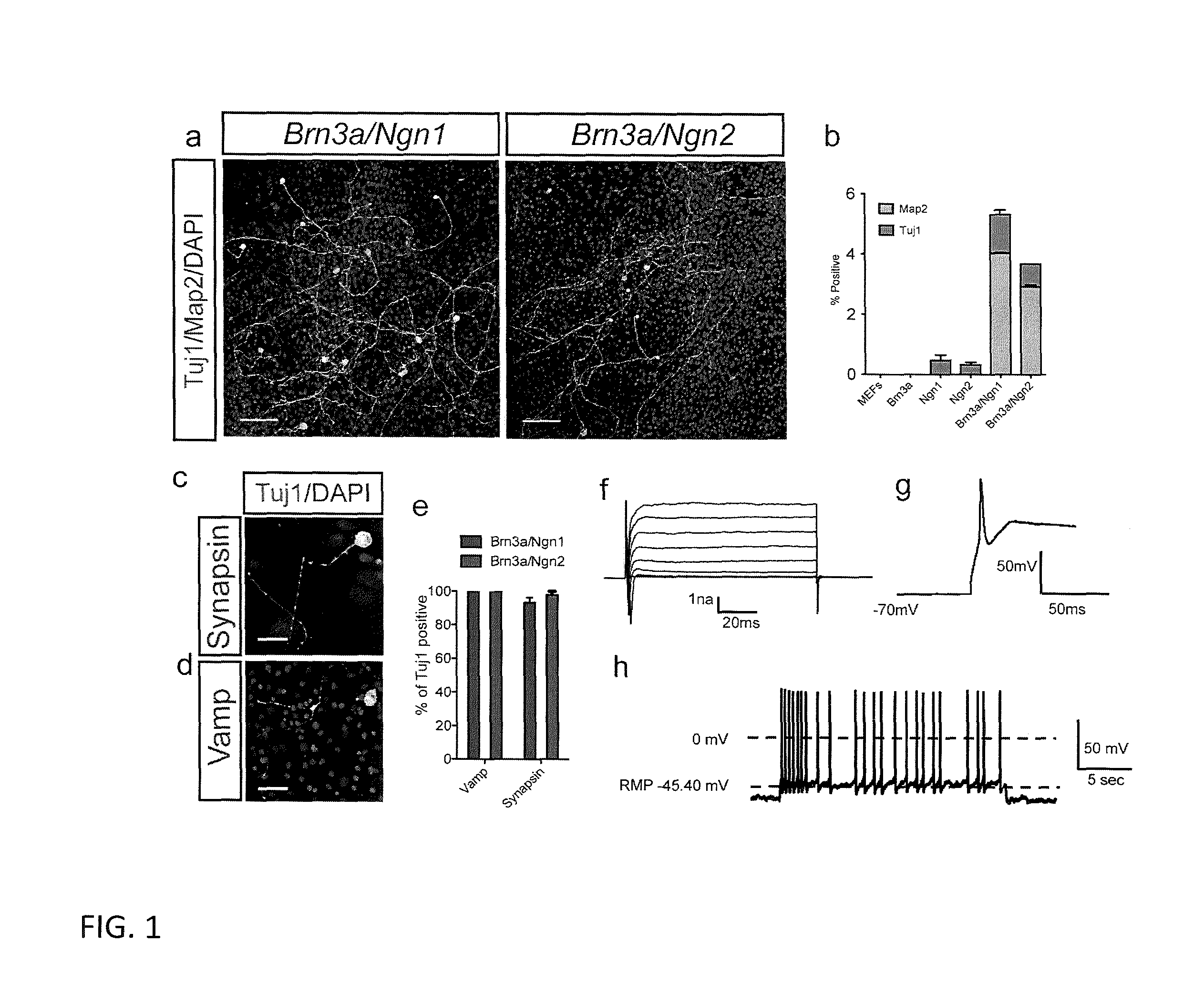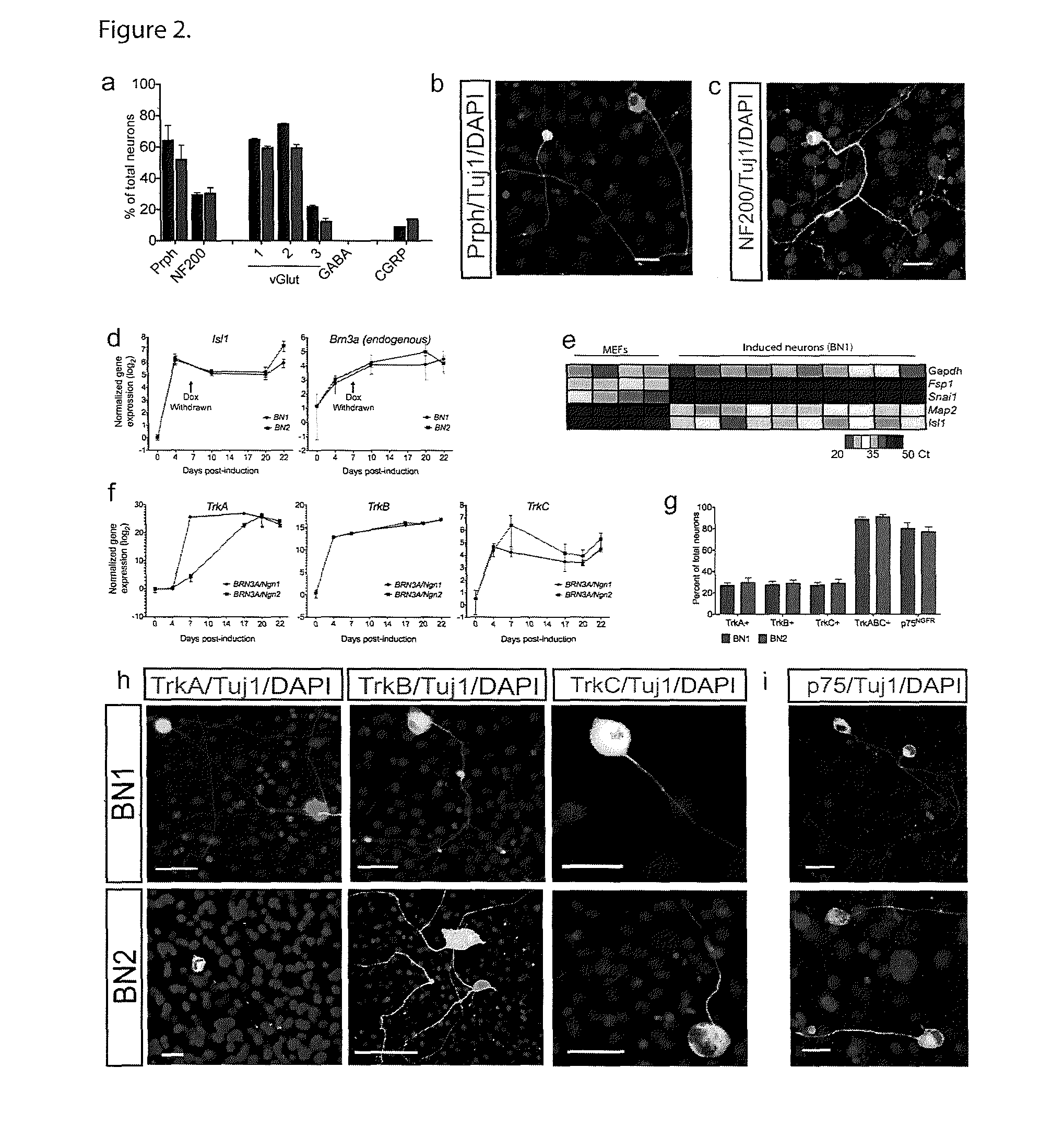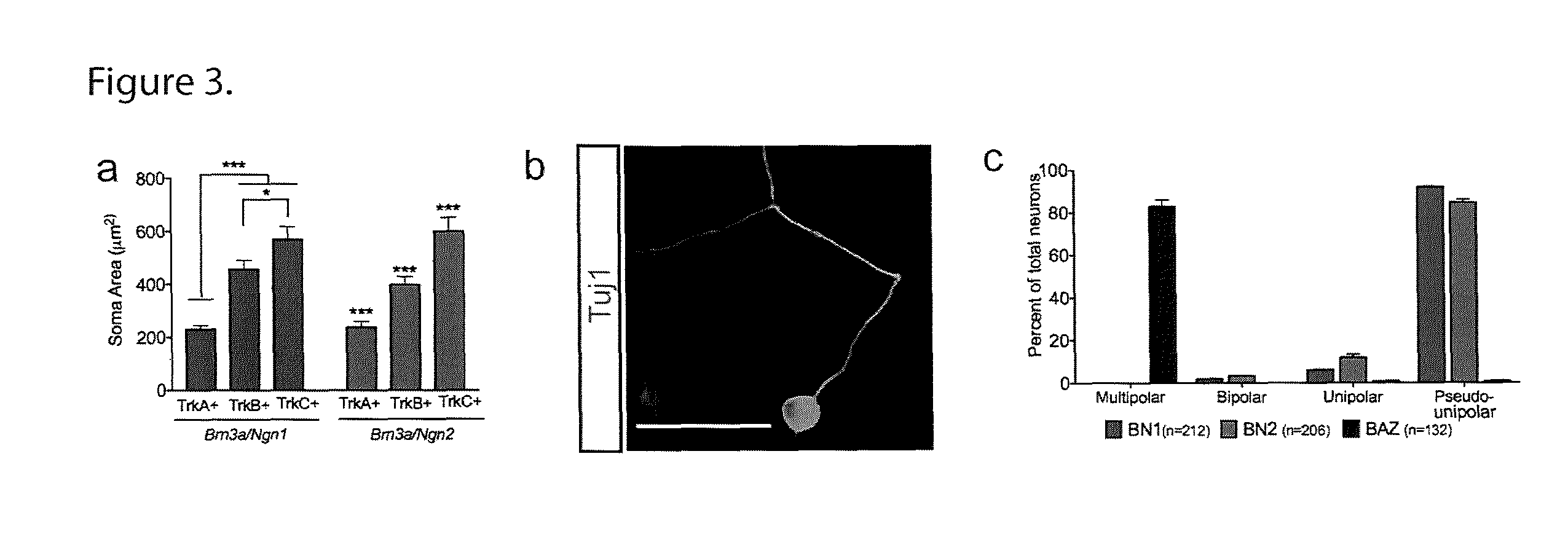Methods and compositions related to induced sensory neurons
a sensory nerve and composition technology, applied in the field of methods and compositions related to induced sensory neurons, can solve the problems of low throughput of in vitro screening, low throughput, and dependence on animal models, and achieve significant unmet medical needs, control and detection of itch are poorly understood, and the effect of reducing the number of patients
- Summary
- Abstract
- Description
- Claims
- Application Information
AI Technical Summary
Benefits of technology
Problems solved by technology
Method used
Image
Examples
example 1
Some Experimental Techniques Used for Generating iSNs
[0075]Embryonic fibroblasts isolation and derivation: Wild-type CD1 mice were bred at the TSRI animal facility. MEFs were isolated from E14.5 embryos under a dissection microscope. The head, internal organs and spinal column containing the dorsal root ganglion was removed and discarded to eliminate cells with neurogenic potential. The remaining tissue was manually disassociated in 0.25% trypsin (Gibco) for 10 minutes at 37° C. subsequently the digestion solution was diluted and removed via centrifugation. The resulting cells were seeded at approximately 3×106 cells / cm2. MEFs were grown to confluency and passaged at least twice prior to use. For HEF differentiation, human iPSCs colonies were harvested using 1 mg / ml collagenase type IV and differentiated by Embryoid Bodies formation. The EBs were cultured for 7days in non-adherent suspension culture dishes (Corning), 2 days in 20% KSR medium and the following 5 days in 10% FBS DMEM....
example 2
Generation of Sensory Neurons from Mouse Embryonic Fibroblast
[0081]To determine whether we could produce induced neurons using factors involved in the development of the somatic sensory neural lineage, we used lentiviral vectors to express either Brn3a and Nng1 (BN1) or Brn3a and Ngn2 (BN2) in mouse embryonic fibroblasts (MEFs). Reprogramming factor expression was controlled temporally by coinfecting with a lentivirus encoding the doxycycline inducible factor rtTA and placing the BN1 / BN2 factors under control of the doxycycline inducible promoter TetO (FIGS. 8a and b). After eight days of induction we removed doxycycline and allowed cells to mature without further expression of the exogenous reprogramming factors. Both the BN1 and BN2 conditions produced numerous Tuj1 positive cells exhibiting neuronal morphology and the majority of these cells also expressed Map2 (FIG. 1a-b and FIG. 8b). This conversion requires both factors. Expression of either of either Nng1 or Ngn2 alone induce...
example 3
Characterization of iSNs Generated from MEFs
[0087]We observed that the reprogramming described herein induces somatic sensory neural morphology. In vivo, sensory neurons also vary with respect to the size of their cell body. TrkA-positive neurons are the smallest, TrkB-positive neurons are intermediate, and TrkC-positive neurons comprise a population with the largest cell bodies. To determine whether iSNs generated with either BN1 or BN2 also adopt this morphological signature we measured the area of TrkA, B, and C-positive neurons. The induced neurons generated by both BN1 and BN2 exhibited distinct distributions of soma size that correlated with expression of TrkA, TrkB, and TrkC (FIG. 3a, and FIG. 10a-b). The mean soma area of TrkA-positive cells (BN1=231.3 μm±14.02; BN2=237.8 μm±21.87) was significantly smaller than TrkB-positive cells (BN1=456.2 μm±34.38; BN2=397.5 μm±30.69). Likewise, the mean soma area of TrkB-positive cells was significantly smaller than TrkC-positive neuron...
PUM
 Login to View More
Login to View More Abstract
Description
Claims
Application Information
 Login to View More
Login to View More - R&D
- Intellectual Property
- Life Sciences
- Materials
- Tech Scout
- Unparalleled Data Quality
- Higher Quality Content
- 60% Fewer Hallucinations
Browse by: Latest US Patents, China's latest patents, Technical Efficacy Thesaurus, Application Domain, Technology Topic, Popular Technical Reports.
© 2025 PatSnap. All rights reserved.Legal|Privacy policy|Modern Slavery Act Transparency Statement|Sitemap|About US| Contact US: help@patsnap.com



